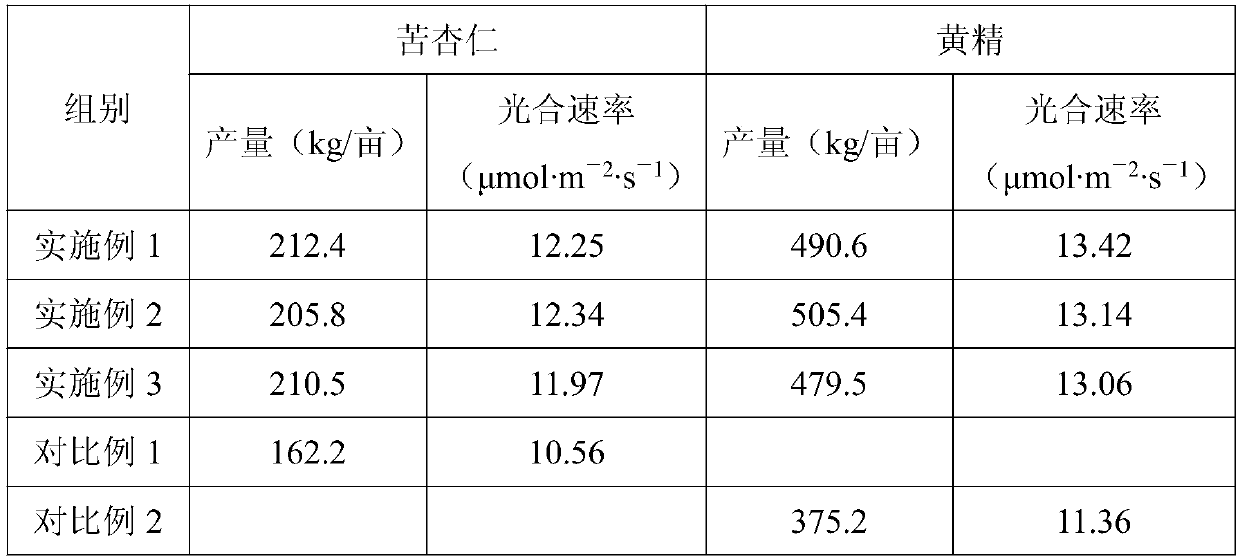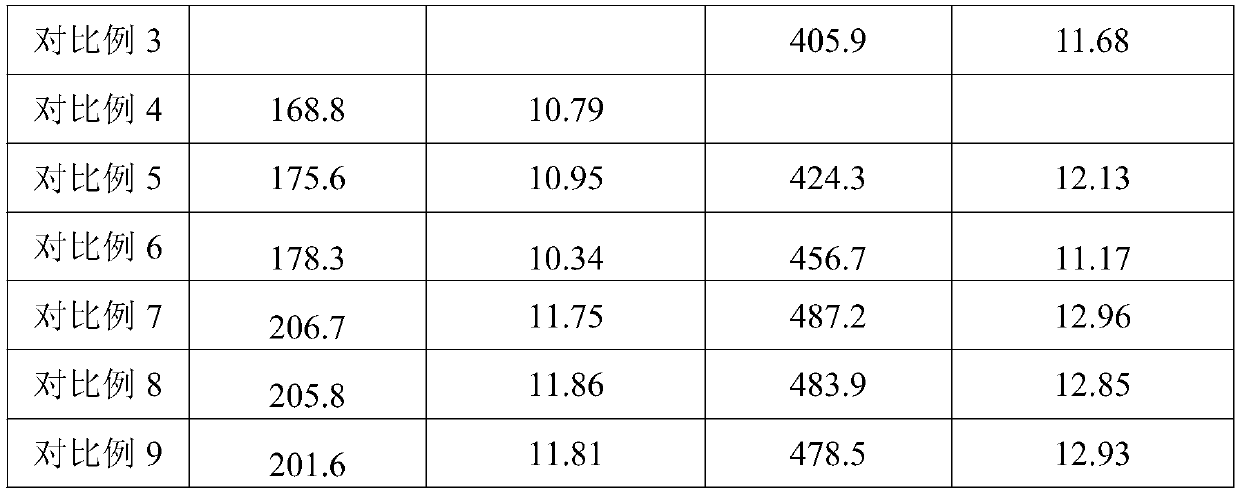Method for interplanting rhizoma polygonati and astragalus sinicus in semen armeniacae amarae
A technology of bitter almonds and milk vetch, applied in botany equipment and methods, fertilizers made from biological waste, plant protection, etc., to achieve the effects of reducing soil salt damage, reducing erosion, and adjusting soil pH
- Summary
- Abstract
- Description
- Claims
- Application Information
AI Technical Summary
Problems solved by technology
Method used
Image
Examples
Embodiment 1
[0034] A method for interplanting sealwort and milk vetch in bitter almonds, comprising the following steps:
[0035] S1: Ridging: The plantation will be rectified in such a way that large ridges and small ridges are spaced apart from each other. The width of the large ridge is 0.7 meters, the width of the small ridges is 0.5 meters, and the distance between the ridges is 0.2 meters; 30 parts, 20 parts of animal manure, 26 parts of straw, 10 parts of plant ash, 17 parts of peanut meal, 1 part of yeast, and 2 parts of Bacillus subtilis are decomposed and fermented farmyard manure, 550 kg per mu;
[0036] S2: Planting: Rub the mature bitter almond fruit to remove the pulp, mix it with wet sand at a ratio of 1:3 for sand storage, sow the seeds in late March, and transplant them to Dalong after the seedlings grow, with a plant distance of 1.4 meters; In the last ten days of March, dig the underground rhizome of Polygonatum, cut into several sections, each section has 4 nodes, dry ...
Embodiment 2
[0040] A method for interplanting sealwort and milk vetch in bitter almonds, comprising the following steps:
[0041] S1: Ridging: The plantation will be rectified in such a way that large ridges and small ridges are spaced apart from each other. The width of the large ridge is 0.8 meters, the width of the small ridges is 0.4 meters, and the distance between the ridges is 0.2 meters; 33 parts, 15 parts of animal manure, 28 parts of straw, 13 parts of plant ash, 18 parts of peanut meal, 1.5 parts of yeast, and 1 part of Bacillus subtilis are decomposed and fermented farmyard manure, 600 kg per mu;
[0042] S2: Planting: Rub the mature bitter almond fruit to remove the pulp, mix it with wet sand at a ratio of 1:3 for sand storage, sow in late March, and transplant it to Dalong after the seedlings grow, with a plant distance of 1.5 meters; In late March, dig the underground rhizome of Polygonatum, cut into several sections, each section has 3 nodes, dry the wound a little, sow in...
Embodiment 3
[0046] A method for interplanting sealwort and milk vetch in bitter almonds, comprising the following steps:
[0047] S1: Ridging: The plantation will be rectified in such a way that large ridges and small ridges are spaced apart from each other. The width of the large ridge is 0.6 meters, the width of the small ridges is 0.4 meters, and the distance between the ridges is 0.2 meters; 35 parts, 18 parts of animal manure, 25 parts of straw, 15 parts of plant ash, 16 parts of peanut meal, 2 parts of yeast, 1.5 parts of Bacillus subtilis. Farmyard manure made by decomposing and fermenting, 500 kg per mu;
[0048] S2: Planting: Rub the mature bitter almond fruit to remove the pulp, mix it with wet sand at a ratio of 1:3 for sand storage, sow the seeds in late March, and transplant them to Dalong after the seedlings grow, with a plant distance of 1.2 meters; In late March, dig the underground rhizome of Polygonatum, cut it into several sections, each section has 4 nodes, dry the wou...
PUM
| Property | Measurement | Unit |
|---|---|---|
| width | aaaaa | aaaaa |
| width | aaaaa | aaaaa |
| width | aaaaa | aaaaa |
Abstract
Description
Claims
Application Information
 Login to View More
Login to View More - R&D
- Intellectual Property
- Life Sciences
- Materials
- Tech Scout
- Unparalleled Data Quality
- Higher Quality Content
- 60% Fewer Hallucinations
Browse by: Latest US Patents, China's latest patents, Technical Efficacy Thesaurus, Application Domain, Technology Topic, Popular Technical Reports.
© 2025 PatSnap. All rights reserved.Legal|Privacy policy|Modern Slavery Act Transparency Statement|Sitemap|About US| Contact US: help@patsnap.com


